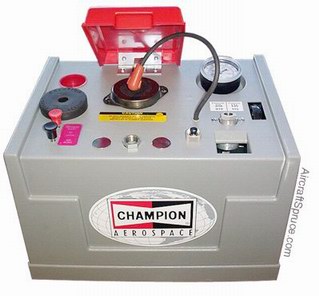Ummm. So your method is guessing and supposing what the problem might be, preferring that to testing your theory and knowing for sure?
-Could be a bad spark plug --- replace it.
-Could be a dirty carb ----replace it.
- Could be a bad coil ----replace it.
And so on.
In the furnace repair bus I was part of, this kind of guessing was the mark of a poor repairman.
The good repairman had a extensive skills in how to test possibly defective parts, and tended to work his way through a series of tests until he was confident he had identified the actual problem.
I had quite a bit of experience with repairmen of the poor type because I often followed along behind them when their repairs didn't actually fix the problem, which recurred.
I do note, however, that B&S maintenance requirements often specify replacing spark plugs after a few hundred hours of machine operation as a matter of routine maintenance. I suppose that would justify routine replacement of spark plugs, but you still aren't really going to know if the plug was the problem or whether you should look further.
DO YOU WANT AN APPRAISAL OF THE VIDEO OR AN ARGUEMENT ?
The latter would seem to be the case
Firstly the economics.
I charge $ 60 / hr to test the plug as he suggests, both hot & cold would take around 20 to 30 minutes so I am charging the customer $ 20 to $ 30 to work out if a $ 7,50 part needs to be replaced.
Next the practicalaties
If the engine is not running then I would have to put the suspect plug into a good engine to get it hot enough to make hot testing readings.
A nursery song comes into mind about a bucket with a hole in it .
Remember he specifically mentions several times a not starting situation.
Now to the theory
1) just about all OHV small engines use a resistor plugs & have done so for decades.
Even a goodly portion of hand held gear uses resistor plugs so he has no idea abut the market he is pretending to be knowledgable of.
2) the resistance of the center electrode is meaningless because it is a tiny fraction of the air gap resistance so he has no understanding of circuitry .
the internal resistance is only used by the plug testing machines at the plug factory to grade the plugs , and yes I have sat behind one for more than one shift.
And if you don't know what it should be reading it is pointless.
3) resistance is proportional to voltage so the resistance readings have to be done at operating voltages which will be in the order of 20,000 V to 80,000 V not the few micro volts that a multimeter uses to determine resistance by means of voltage drop.
4) ever since tier III exhaust emissions came into operation, glazing on the insulator nose has not been done.
Rubbing the nose with a wire brush will leave a conductive metallic streak which is not a good idea at the best of times & of course you can not get to the region masked by the ground strap .
Remember the streak tests you did in high school geology ?
5) modern fuel is conductive at cylinder pressures and it does not wash off with any common solvent , including brake cleaner ( so we are also wasting money on that )
Modern plugs can only be cleaned with either silica abrasive blasting or by being burned off with an oxygen rich flame ( more additional costs )
6) next the plug has to fire at cylinder compression so proper testing is done at the pressure appropriate for the engine in question .
Proper plug testers fire the plug at the proper frequency for the engine they are to be used in . They are tested by varying the voltage in a fixed pressure ( appropriate to the engine ) then at a fixed voltage , appropriate to the ignition system and varying the pressure.
The machines used to be given away to mechanics who sold better than 2000 plugs a year or could be bought for around $ 10,000.
The time taken to set the machine up plus the operating costs ( it uses compresses air & electricity ) plus the testing time have to paid for some how which can again only be added to the price of replacement plug or the engine service.
Now I am a newbie & have only been servicing small engines daily for a living for the past 7 years .
It takes me all of about 5 minutes to determine if a no - start is ignition or fuel related and another 30 seconds to try a new plug and in most cases when I ask the customer to demonstrate their problem the sound , sight & smells will be enough for me to know where to start looking if not make an immediate fix.
If the engine did not start and the fuel system is working the plug will be wet, don't need a VOM to see that, just a functioning brain & a pair ( or at least one ) functioning eye ( actually you could just smell the plug ).
Now I have only done around 3000 jobs on small engines but I am yet to come across an intermittant problem that is plug related on a mower.
I have seen it on motorcycle engines but it was always a gradeof plug that was not compatiable with the ignition system
SO my honest opinion,
He is a WANKER desperately trying to supliment his income from face book advertising revenue or a moron seeking to massarge his ego which is several factors larger than his IQ

